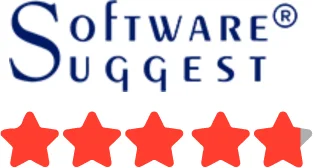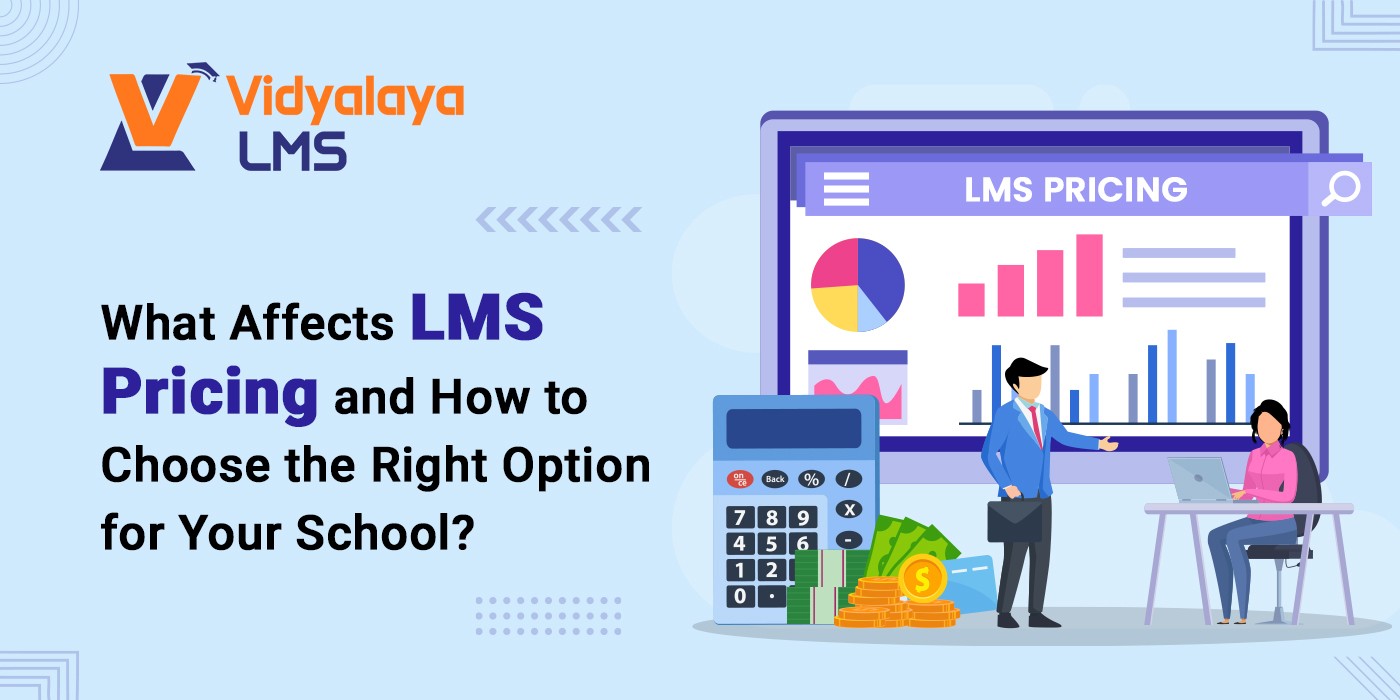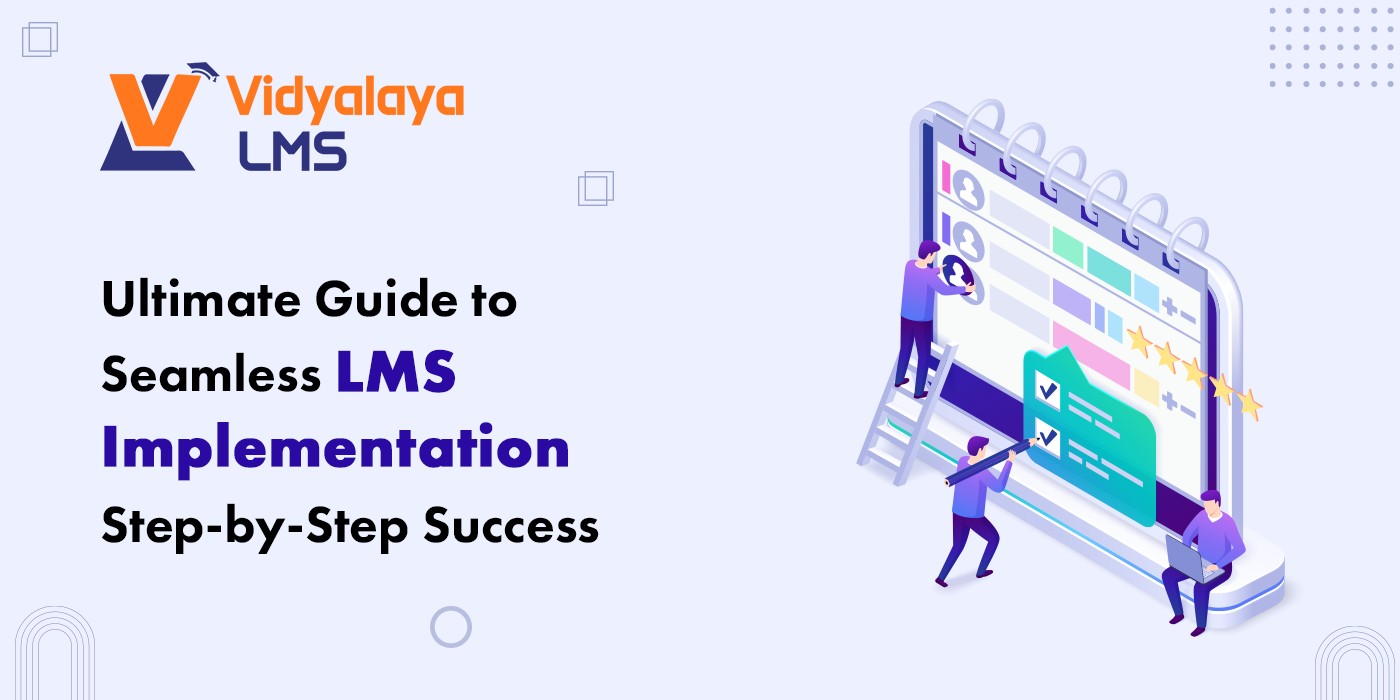In the digital-first world of education today, selecting the best Learning Management System (LMS) for your school has become necessary, not optional. For many schools and institutions, the complication of features, add-ons, user licenses, and hidden charges makes navigating LMS pricing their biggest challenge.
So, what is behind LMS pricing? And how can you make sure you’re getting the right solution for your school without breaking the bank? Let’s break it down.
Understanding LMS Pricing: Price Is Just a Price:
When schools start to look for an LMS, they are introduced to a staggering range of price models that include everything from free open-source platforms to per-year enterprise platforms.
Key Factors That Affect LMS Pricing:-
1. Number of Users and Licensing Model:
Most LMS providers structure their pricing around the number of users, typically including administrators, instructors, students, and sometimes parents.
- Per-user pricing: You pay based on the number of active learners who use the platform.
- Tiered or bundled pricing: You pay a set price for a defined range of user numbers, such as 0-100, and 101-500.
- Site licensing: You pay for an annual license for unlimited users, with no limit on the number of users.
2. Capabilities and Features:
All LMS platforms include basic features for managing courses, and adding more advanced features leads to higher LMS pricing. Advanced features include:
- Online assessments & proctored assessments
- AI-enabled learning analytics
- Gamified learning components
- Integration with third-party tools (Zoom, Google Classroom, etc.)
- Mobile App support
- Language support (multi)
The pricing structure of the platform will also matter. Some LMS providers provide “modular pricing”, meaning you only pay for the features you want to use. Some platforms provide all features as part of one premium package.
3. Hosting Model: Cloud-based vs On-premises:
LMS pricing is also based on a model of how the service is hosted:
- Cloud-based LMS (SaaS): Typically, this hosting model includes hosting, security, updates, and support as a subscription model, which typically makes it more affordable for schools.
- On-premises LMS: This hosting model requires the organization to have the IT structure and technical know-how to maintain servers and run updates manually. You may incur a higher initial cost.
4. Customization Requirements:
Does your LMS need to incorporate your school branding, provide support for local languages, or include custom workflows? Higher levels of customization will usually have a direct relationship to a higher LMS price, mainly due to development costs.
5. Support and training:
Some vendors include free onboarding; others charge extra for:
- Teacher training
- Technical support
- Data migrations
- 24/7 helpdesk or priority support
If your school does not have in-house technology support and service is important to you, paying extra may be worth it for the vendor that has excellent customer support (you could find it beneficial to take the extra charge being motivation to reference customers using their service?!).
6. Implementation and Onboarding Fees:
One area not to forget about is the initial setup fee; it can be substantial just to set up the LMS platform. This could include:
- The platform is being configured
- Data being imported
- Role-based access is being configured
- Initial training of administrators
While some vendors do not charge you separately and will charge as part of the first-year fee, others will charge separately. Don’t forget to clarify to avoid future costs.
7. Scalability and Future Growth:
A low-cost LMS may work for now; however, what happens when your school grows? In the long run, a scalable LMS (one that increases LMS pricing as your needs increase) could ultimately be more cost-effective than switching platforms at some later time.
Now you’ve learned about what influences pricing, let’s look at the types of LMS pricing models that schools commonly experience.
LMS Pricing Models: Which One Suits Your School?
1. Free and Open Source LMS:
Advantages:
- Free licensing
- Flexible and customizable
Disadvantages:
- Need technical expertise for maintenance
- No official support
- Potentially lengthy setup
Best For: Institutions with technical expertise on-site.
2. Freemium LMS:
Advantages:
- Free access to essential features
- The option to upgrade
Disadvantages:
- A limited number of features
- Possibly displaying advertisements or usage limitations
Best For: Smaller schools wanting to explore the features of LMS before committing long-term.
3. Subscription-Based LMS (SaaS):
Advantages:
- Stable monthly or annual fee
- Includes hosting, updates, and support
Disadvantages:
- Recurring monthly/yearly fee
- May cost additional for premium features
Best For: Medium and larger institutions wanting simplicity and reliability.
4. Perpetual license (one-time fee):
Pros:
- One-time payment with a lifetime use.
- Full ownership.
Cons:
- No automatic updates.
- Higher upfront cost.
- You own the burden of maintenance.
Best suited for: Organizations with robust IT support and strategic long-term planning.
How to Choose the Right LMS Option for Your School?
Picking the best LMS option is more than just finding a price — it’s finding a value.
Here is a checklist to help you in your decision:
Step 1: Determine Your Core Needs
How many deactivated users will you have on the system?
Will you have any live classes, assignments, assessments, or portals for parents?
Will you need integrations with your existing tools?
Step 2: Figure out a Budget
Think about your upfront and long-term costs:
- Initial setup
- Monthly/yearly subscription
- Support and training
- Future upgrades of features
Step 3: Consider the Total Cost of Ownership (TCO)
Don’t be fooled by the low price at the beginning. Consider:
- Customizations needed.
- Technical staff, if any, is required.
- Potential hidden costs (SMS, storage, etc.)
- Compare LMS prices between vendors by looking at what is included.
Step 4: Conduct a Free Trial or Demo
Hands-on experience indicates:
- Ease of the LMS for teachers and students
- Assess customer support responsiveness
- Quality of reporting tools
Most LMS providers offer a free demo, so take advantage of this free opportunity before deciding.
Step 5: Speak to Other Institutions
Ask peer schools:
- About their LMS vendor experience
- About what was successful (and unsuccessful)
- How their pricing model matched expectations
Real-world responses are often much more informative than brochures.
Final Thoughts: LMS Pricing Should Reflect Value, Not Just Cost
It’s easy to get caught up in numbers when budgeting for an LMS. However, the least expensive system may not have the best impact on your students in the end. An LMS should enhance engagement, streamline learning, and provide sound guaranteed support within your school’s budget.
Vidyalaya LMS Made for Institutes Like Yours If you’re looking for a learning platform that is simple, powerful, and just works – Vidyalaya LMS is here for you. We have experienced hundreds of schools and know what they need. Whether it be managing online classes, student progress tracking, saving teachers time, or giving parents more visibility – we ensure our platform makes digital learning simpler for everyone. With tools supporting AI insights, gamified learning, access via mobile formats, and a support team there when you need it, we keep your school laser-focused on what matters most – Education.
Let’s talk! Contact us today and let’s discuss how Vidyalaya LMS can support your school, helping it in delivering great learning experiences.



























